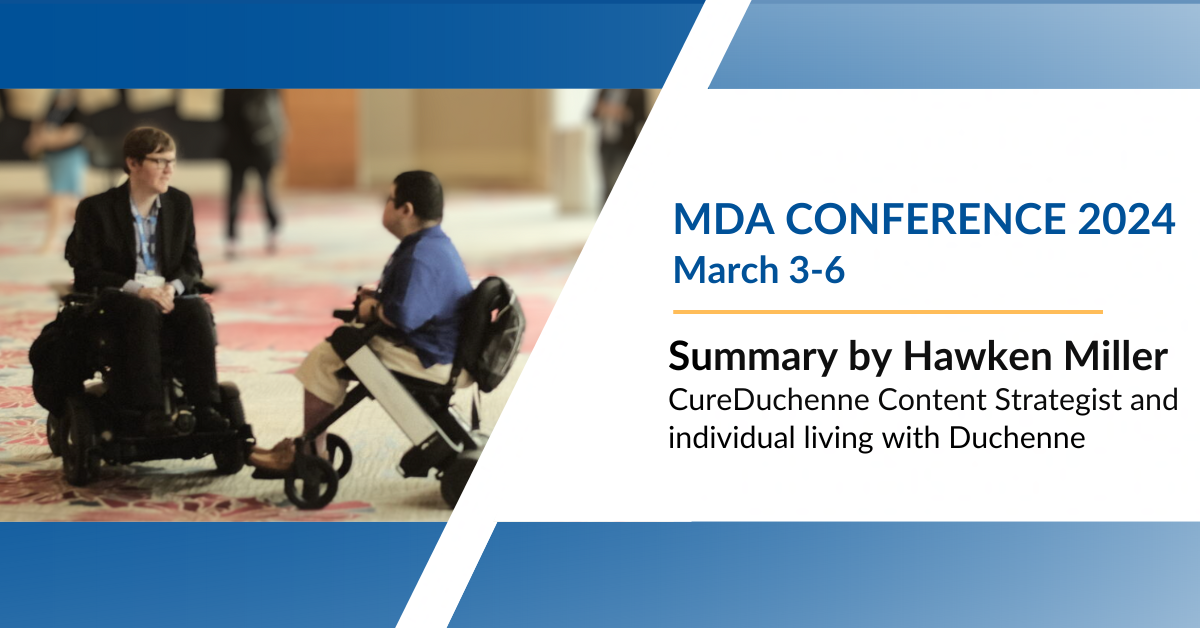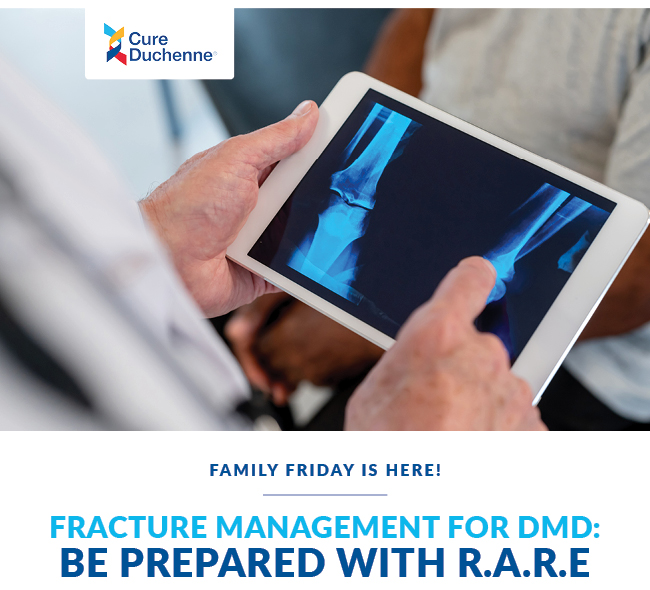Here’s What You Missed at the MDA Clinical and Scientific Conference

Hawken Miller, a content strategist for CureDuchenne and individual with Duchenne, shares his highlights of the Muscular Dystrophy Association Clinical and Scientific Conference and takeaways from the sessions he attended.
This year’s Muscular Dystrophy Association Clinical and Scientific Conference was full of presentations on research, clinical trial updates, inspiring speeches, and networking among advocacy organizations, academics and industry representatives.
Gene therapy in Duchenne muscular dystrophy was a pervasive topic of discussion throughout the conference. Presentations focused on sharing experiences and learnings among clinicians who have administered these therapies, understanding the immune signaling pathways in response to treatment, comparisons between microdystrophin gene constructs, and ongoing clinical trials. Novel methods of delivering dystrophin were also presented, whether through modifying lentiviruses or lipid nanoparticles, or new AAV vectors that target muscle better.
The 4-day conference kicked off Sunday and presentations began Monday with an inspirational keynote. Amyotrophic lateral sclerosis (ALS) patient advocate Brooke Eby gave an impassioned speech asking organizations, scientists, and industry to not just come with grand ambitions of curing a disease, but rather come with effective methods to execute ideas that will improve patients’ lives.
Jeffery Chamberlain, PhD, who leads a research lab at the University of Washington on the biology behind muscular dystrophies and the structure and function of dystrophin, received the MDA Legacy Award for Achievement in Research.
Sarepta Therapeutics, Regenx Bio, and Pfizer updated conference attendees on data and analyses from their gene therapy clinical trials. The FDA plans to make its PDUFA decision on expanding the label for Sarepta’s Elevidys beyond 4–5-year-olds by June 21, 2024.
Many preclinical studies also looked at microdystrophin delivery to the heart and its potential efficacy. Scientists who studied microdystrophin effects in cardiac stem cells in vitro found it only rescues a portion of function. More research will need to be completed to learn more about how dystrophin works in the heart and to what extent gene therapy can improve function.
The role of the immune system, cellular communication pathways and response to cell injury in Duchenne muscular dystrophy were also hot topics. That included presentations on regulatory T-cells and their interactions with macrophages, TGF β and how it can impair muscle health, and cell growth in the extracellular matrix. Several presentations aimed to understand these processes better to develop strategies to improve the regenerative capacity of muscle cells.
Interest in Duchenne muscular dystrophy was palpable throughout the conference and new scientific discoveries in this disease continue to occur every year. Many research ideas are prohibitively expensive to develop, however, this shows that support to bring these ideas from bench to bedside is as important as ever.
Many CureDuchenne industry sponsors will return to Orlando May 23-26 for CureDuchenne’s annual FUTURES conference, focused on updating individuals with Duchenne and families on the latest research and care and inspiring them to focus on what’s possible in the future.





